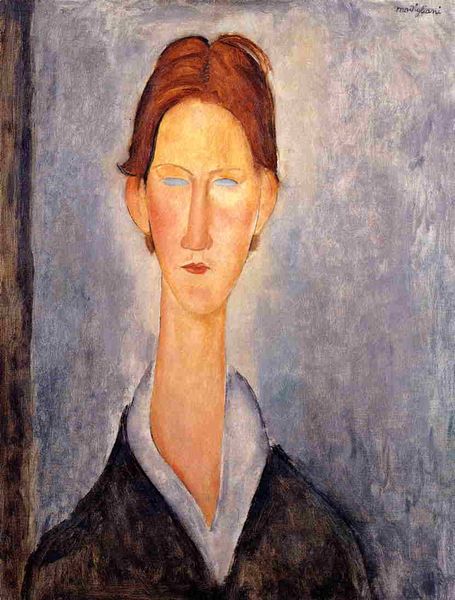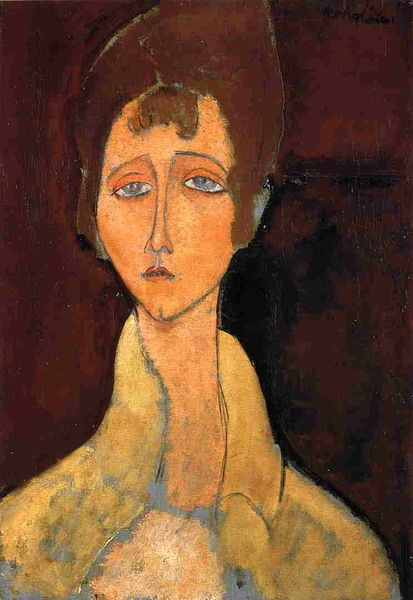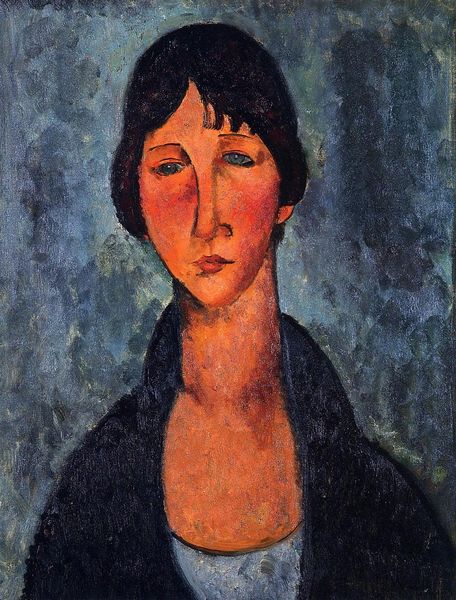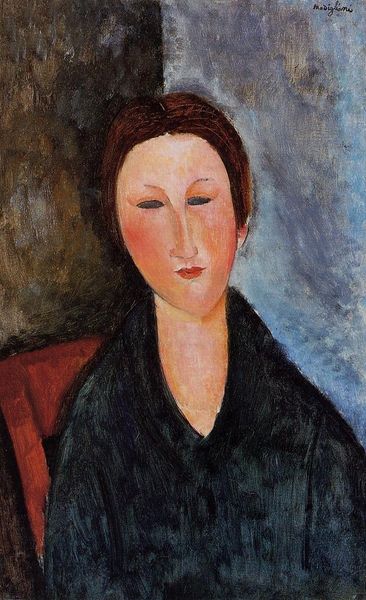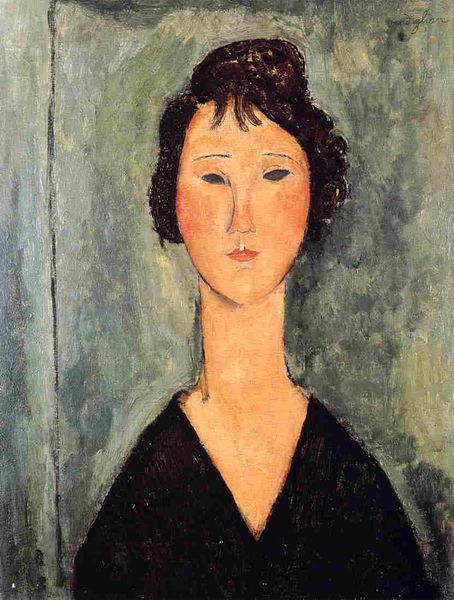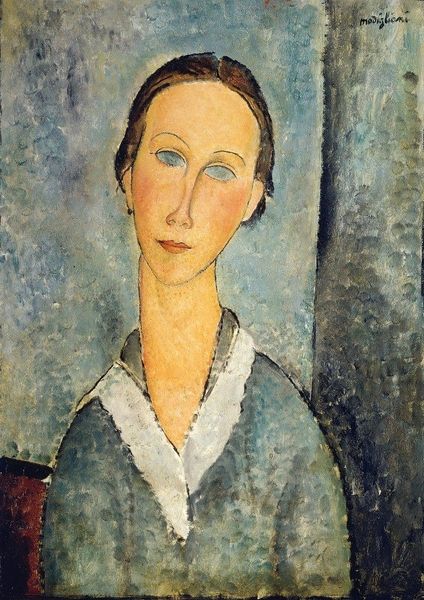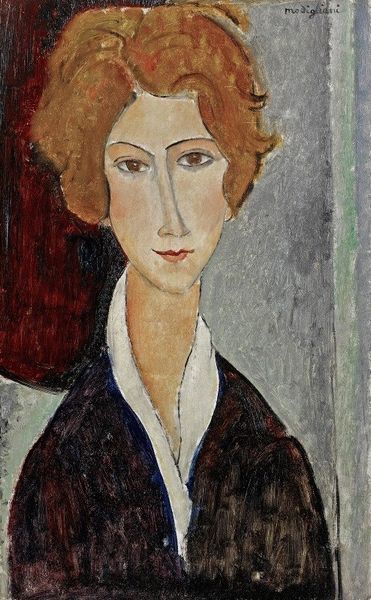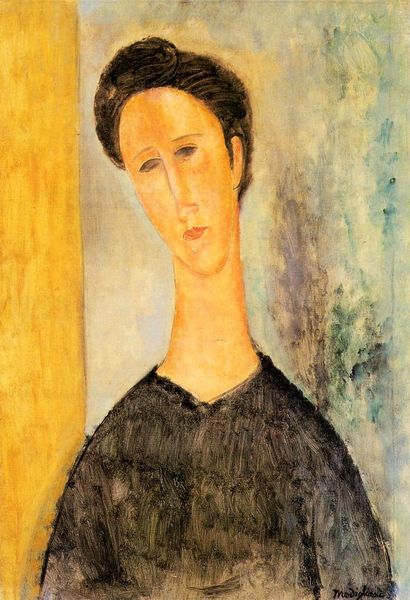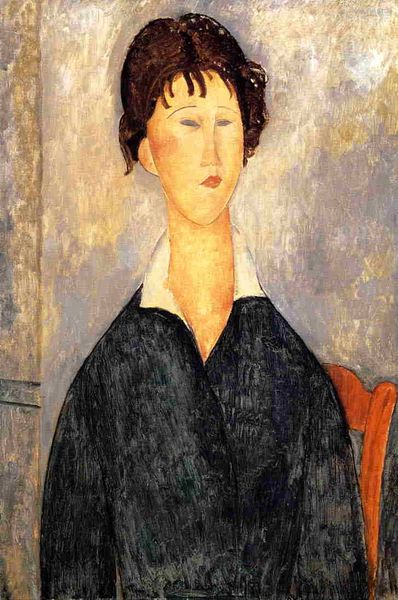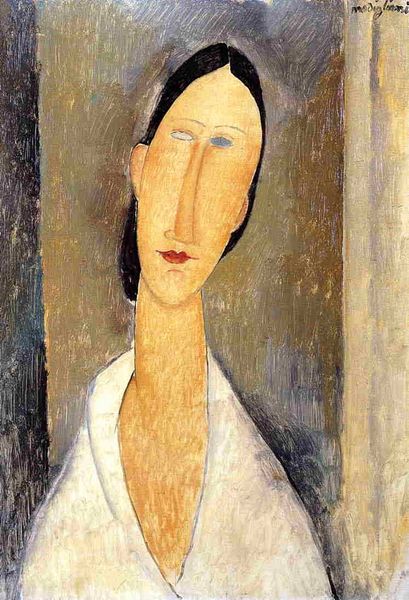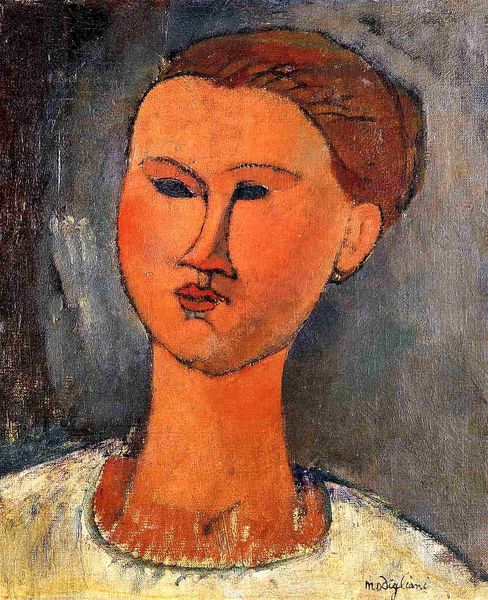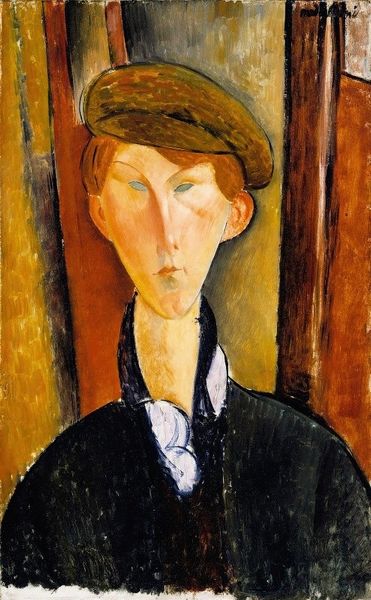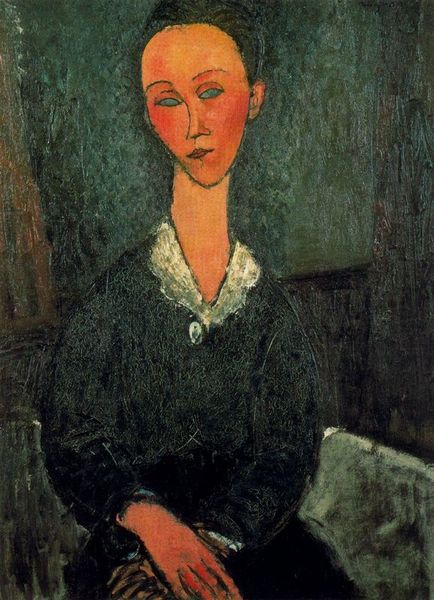
Portrait of a Young Woman 1919
0:00
0:00
amedeomodigliani
Musée des Beaux-Arts de La Chaux-de-Fonds, La Chaux-de-Fonds, Switzerland
painting, oil-paint
#
portrait
#
art-nouveau
#
painting
#
oil-paint
#
figuration
#
intimism
#
expressionism
#
modernism
Dimensions: 65 x 50 cm
Copyright: Public domain
Editor: Here we have Modigliani's "Portrait of a Young Woman" from 1919, an oil painting currently housed in Switzerland. The first thing that strikes me is the almost unnerving gaze, intensified by the almond-shaped eyes lacking pupils. What do you make of this striking figure? Curator: The eyes, as you mentioned, are particularly compelling. Throughout history, the eyes have been considered 'windows to the soul' - what does it signify when those windows are blank? Are they vacant or perhaps deeply internal? This treatment removes a layer of individuality, creating a space for universal empathy, almost archetypal. We’re invited to project our own experiences and interpretations onto her. Editor: That's fascinating! So, rather than a specific person, she becomes more of a symbol. The elongated neck too – does that hold significance? Curator: Absolutely. The elongated neck is a recurring motif, seen often in Modigliani's work, a gesture towards elegance and grace that recalls, perhaps intentionally, the elongated forms present in classical art and even in some African masks he was exposed to at that time. Editor: It seems that he synthesizes cultural symbols and traditions through figuration, simplifying features down to geometric shapes that speak more loudly than realistic renderings of an individual. Curator: Precisely. He explores universal concepts such as identity, beauty, and emotion using these recurring symbols. Modigliani asks us to consider not only what we see, but how images work on our psyche over time, layering meaning onto familiar forms. The power of art lies not just in the object itself, but the accumulation of cultural associations we all bring to it. Editor: That’s a compelling perspective. I’ll certainly be thinking about the role of cultural memory in portraiture moving forward. Curator: I’m glad to offer some guidance in how we build our understandings of images over time.
Comments
No comments
Be the first to comment and join the conversation on the ultimate creative platform.
